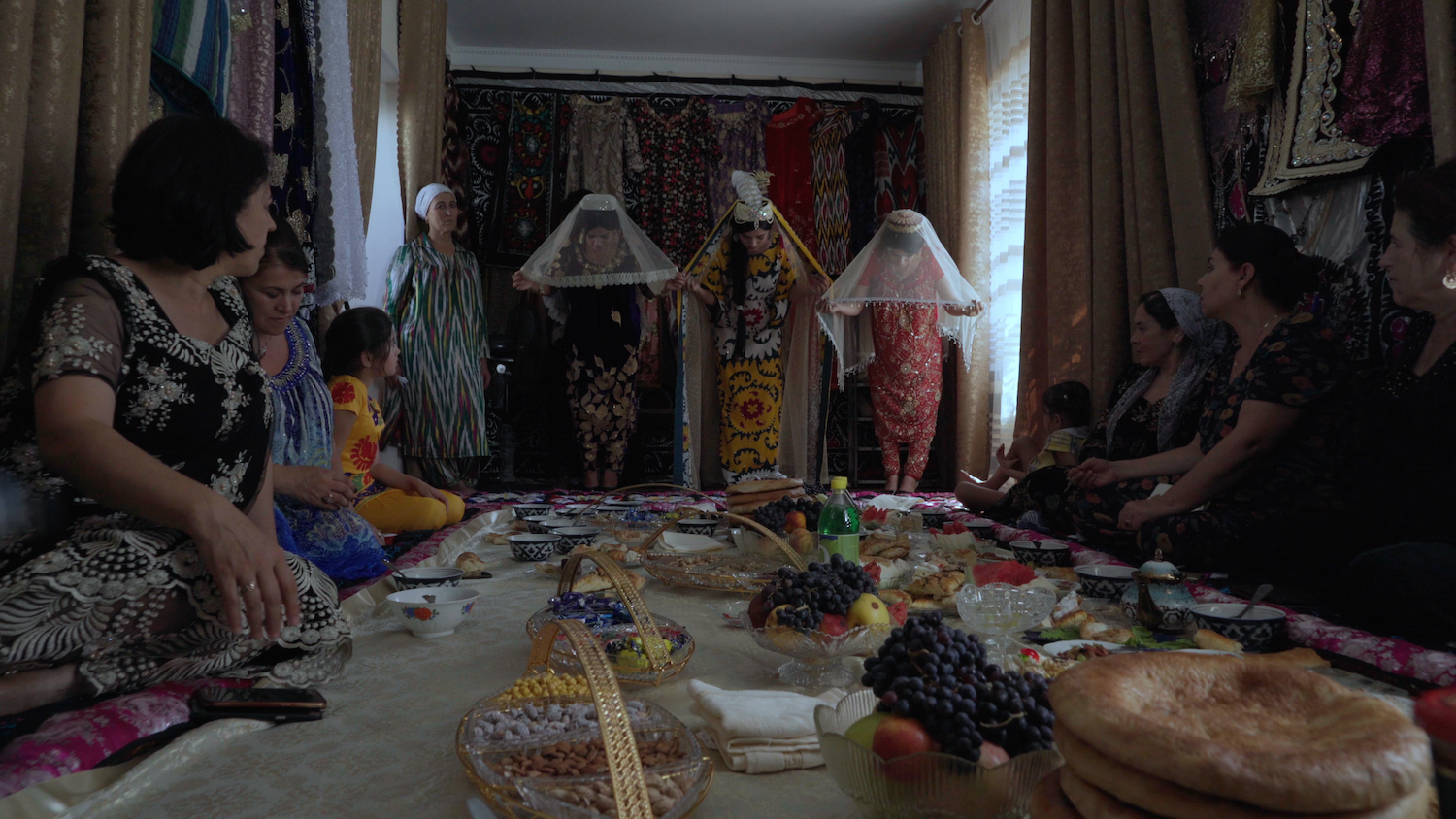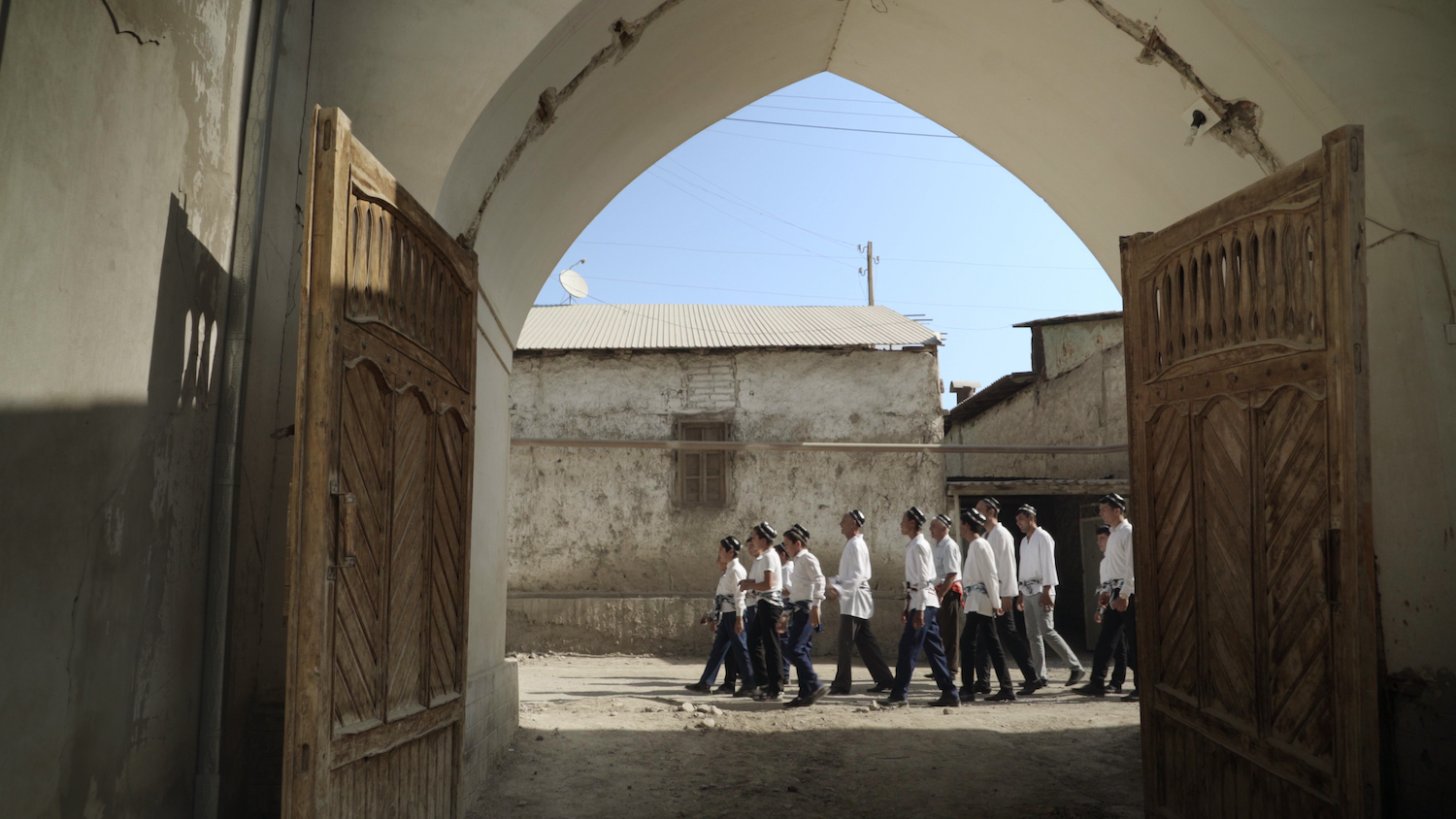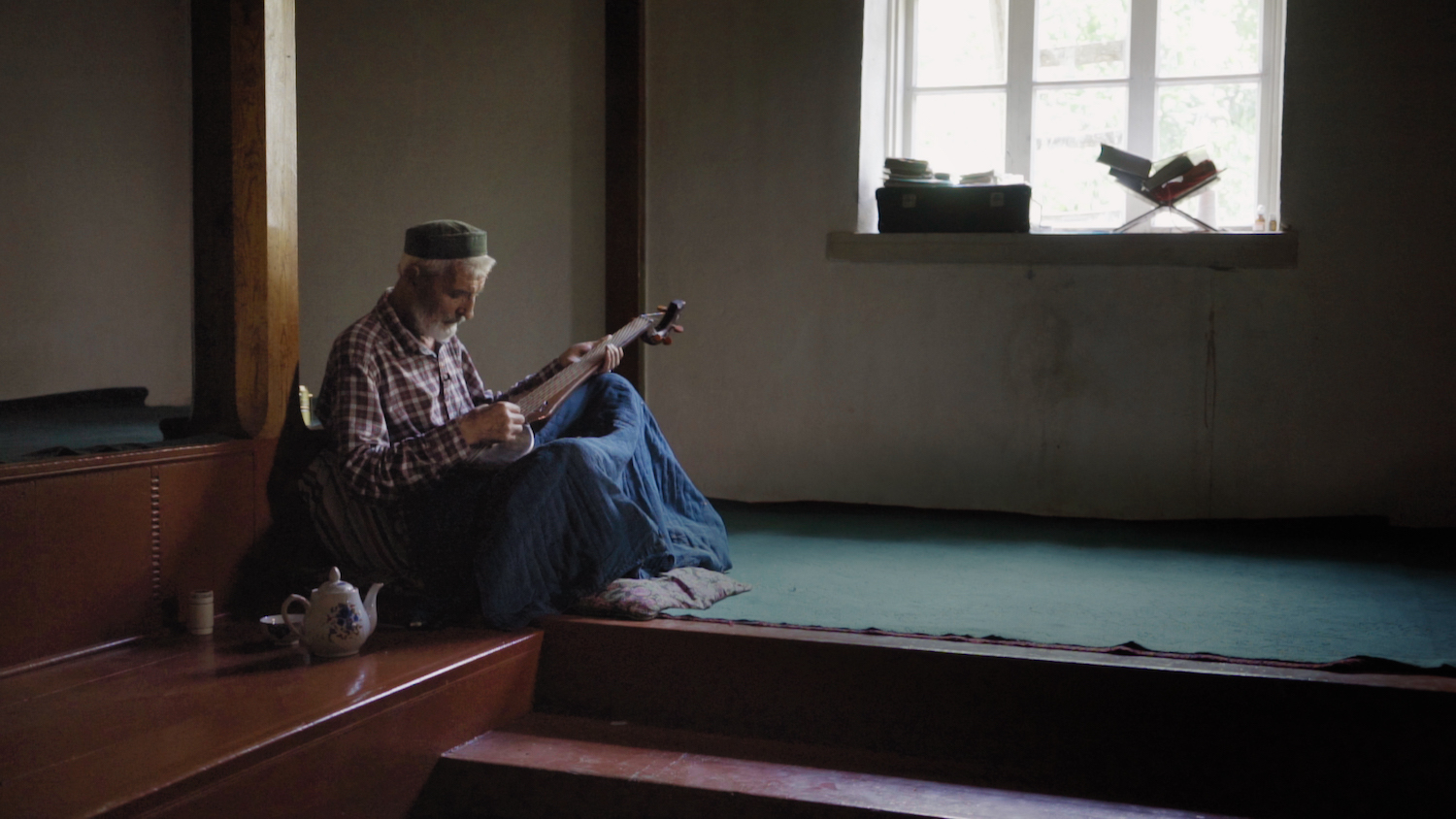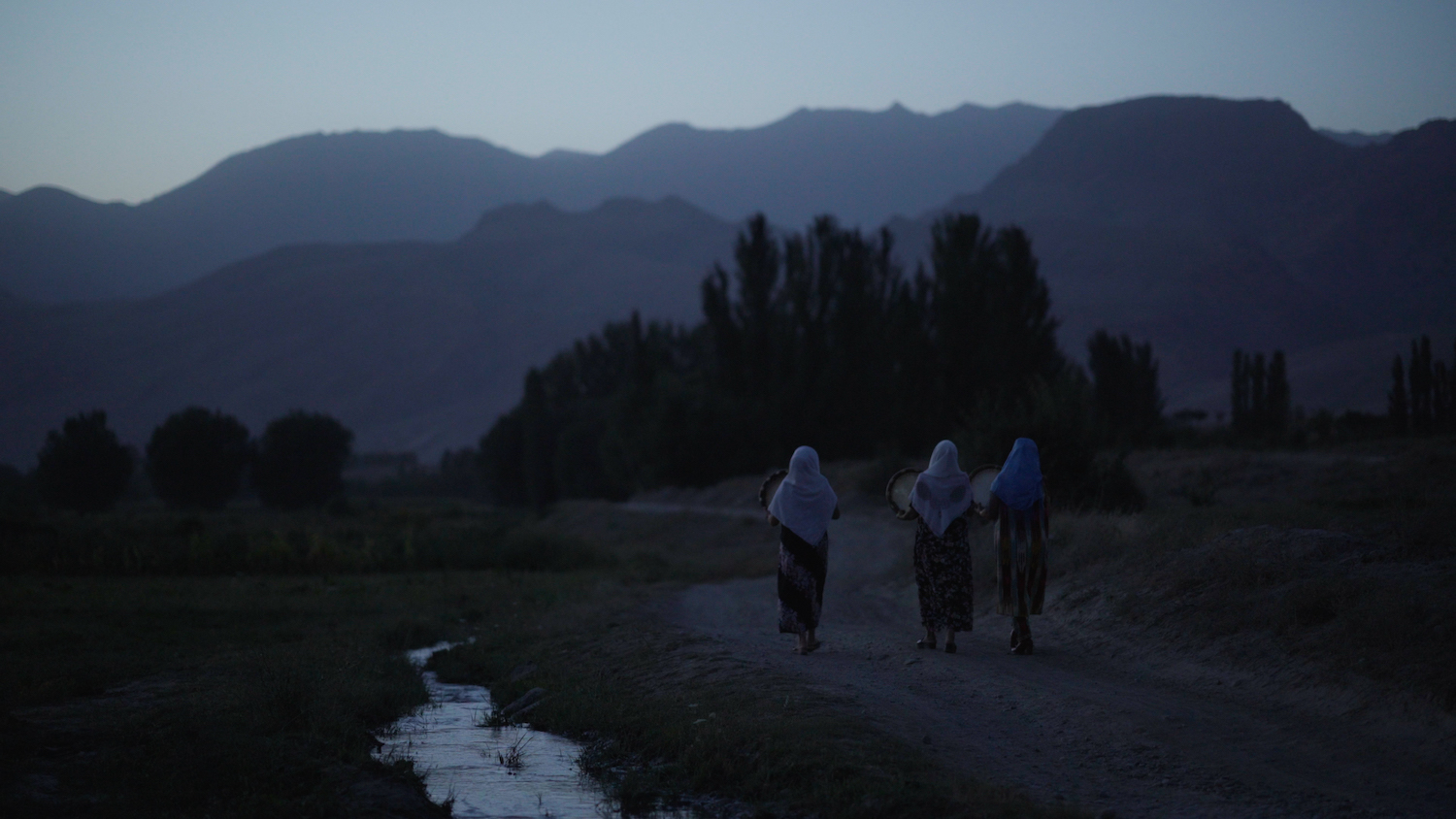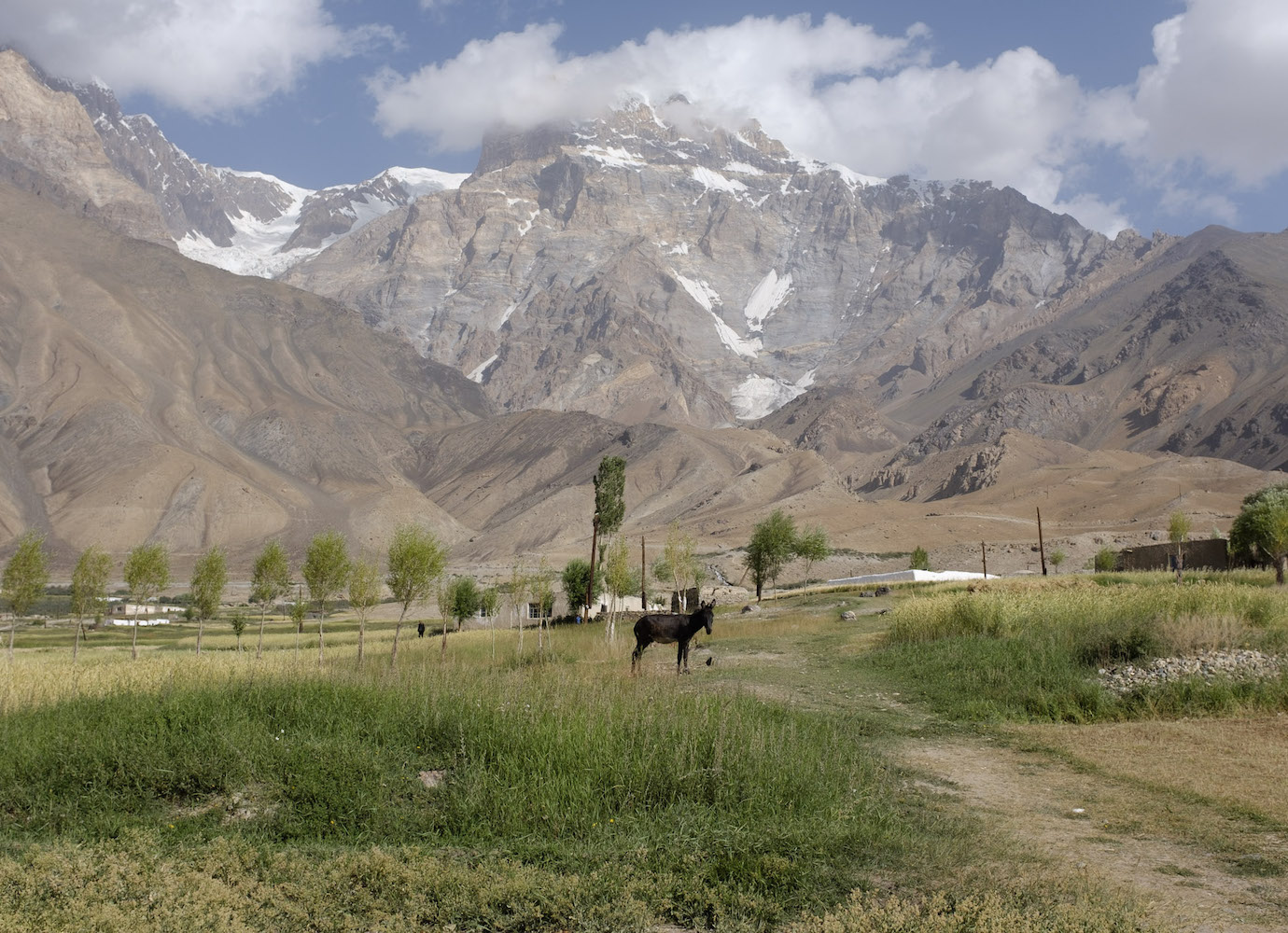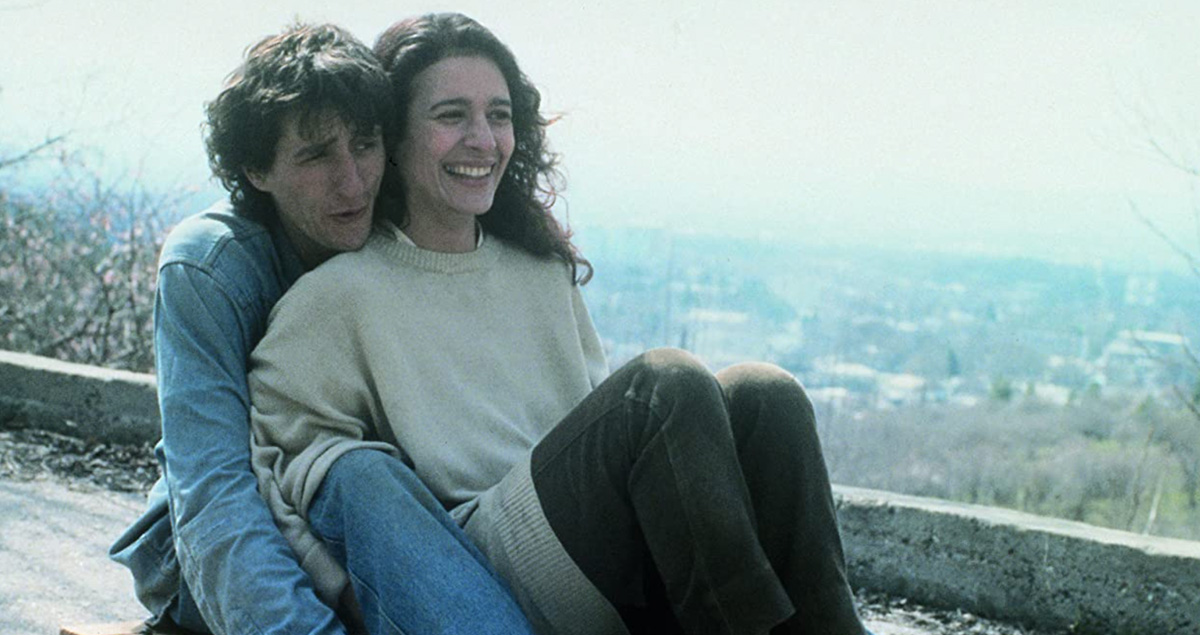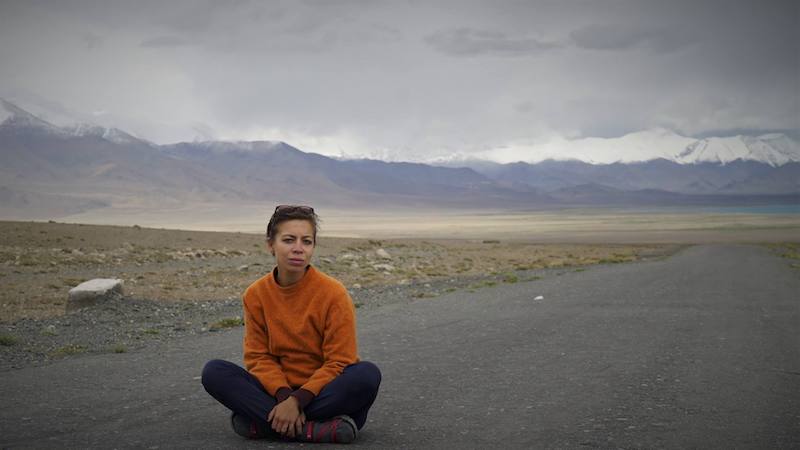Rhythms of Lost Time: an otherworldly journey in the fight to preserve Tajikistan’s ancient musical rituals
Rhythms of Lost Time, directed by Anisa Sabiri, will be screened on 30-31 October as part of The Calvert Journal Film Festival. Check out the programme and get your tickets here.
In Tajikistan’s mountainous eastern province of Badakhsan, music is embedded in people’s lives, following them from birth to death. This music is inherently religious — handed down from the area’s Zoroastrian ancestors — and was often seen as contradicting the core values of the successive governments that ruled the region. Medieval Arab and Turkic control brought Islam to prominence in the country, while later Soviet rule attempted to implement official secularism. Yet due to Badakhshan’s inaccessible location, its people were better able to protect their musical traditions from those officials who sought to restrict them. Filmmaker Anisa Sabiri’s 2021 documentary Rhythms of Lost Time sets out on an exploratory journey to discover how these traditions of eastern Tajikistan were preserved, in a movie that is in equal parts film and spiritual quest.
Sabiri — herself from Tajikistan — once worked as a tour guide in the country, and, in a way, the film functions as a musical tour of Badakhshan. Performances throughout the film display the myriad ways in which traditional Tajik music is central to the lives of the Badakhshani people, and the importance of it in key rituals. This religious aspect of the music varies: for some, it comes down from Zoroastrian belief and honours Ahuramazda, while for others, it is an Islamic belief that honours Allah. After the fall of the Soviet Union in 1991, Tajikistan became independent, but the following year a civil war broke out, that lasted until 1997. Current laws in the country ban the performance of elaborate, expensive ceremonies: a label under which this ritual music is considered to fall. Amidst the shifting political and cultural landscape of the region, traditional music was preserved either by re-branding it, so it aligned with the policies of the government, or by its practice in secret, out of sight of authority.
Rhythms of Lost Time vibrantly depicts the results of this preservation, recording contemporary practices of these ancient musical rituals throughout Badakhshan. The documentary, artfully blending narration and interview with strikingly colourful imagery and immersive soundscapes, captures how music is present in the everyday agricultural routine of farmers, and it serves as a central component in significant stages of life, such as weddings and funerals.
In her director’s statement, Sabiri highlights the relationship of music to life — and, inevitably, death — as it is embodied in the Badakhshani tanbur, a local stringed instrument. “Each time I visited traditional craftsmen or artists, their practice resonated with me deeply,” she says. “I was particularly drawn to the music of the tanbur. I wondered aloud to a local musician why its sound affected me so much, and he told me that it is not just a musical instrument: its purpose is to help the soul to separate from the body after death. Therefore, he said, the tanbur cries.” The tanbur is featured prominently during maddoh, the musical rite performed at funerals. In the film, musician Aliakbar Odinamamadov solemnly states, “Maddoh is simply the word of God”: music that helps the soul depart from the body and enter the afterlife. This connection of music to the body and soul is felt throughout the lives of each person within the community, “from lullabies at his birth to maddoh at his death,” the film’s narration explains. At birth, the soul is connected to the body and the earth; during marriage, the soul is joined to that of another; at death, the soul departs from the body and the earth.
In Rhythms of Lost Time, Sabiri is sometimes accompanied by Leo Abrahams, a British musician whose credits also include composition and production. Abrahams first heard the music of maddoh through musician Lu Edmonds, who recorded music he heard while travelling throughout Central Asia. Abrahams is featured sparingly throughout the film, and one might wonder what purpose his Western perspective serves in the documentation of traditional Tajik music. While the relevance of Sabiri’s perspective as a director is self-explanatory, for Abrahams, the film is just the realisation of a ten-year long desire to hear maddoh in person: “What specifically interests me about maddoh is that it wasn’t just that this music was rhythmically, and harmonically, and melodically fascinating. It was all those things. But what really struck me was that it felt like much more than music, or it felt like somehow the music of nature, or even though I don’t consider myself a religious person, a music of God,” he explains.
“I wondered aloud to a local musician why the sound of the tanbur affected me so much, and he told me that it is not just a musical instrument: its purpose is to help the soul to separate from the body after death. Therefore, he said, the tanbur cries”
The ambient noise of nature itself fills the film’s sonic space: the crackle of fire, howling of wind and singing of birds. These sounds fuse with the tanbur, as well as the daf, a frame drum, and the percussive and vocalic expressions of a choir, the clapping of hands and the stomping of feet. The body itself becomes an instrument, united with nature and music.
For Sabiri, her goal is not just to be a filmmaker, “but a storyteller from Tajikistan – a country about which there is a lot to say.” Sabiri succeeds in doing just that, allowing the people and the music of Tajikistan to speak for themselves in Rhythms of Lost Time. She is also not afraid to include moments of silence, documenting rituals and daily life just as they occur. Musicians interviewed in the film estimate that around 90 per cent of traditional Tajik music has been lost due to a lack of resources, be they monetary or in terms of recording equipment. In documenting this music, Rhythms of Lost Time itself becomes a record; preserving ancient music — in the peoples’ own words, on their own terms — for future generations.
Rhythms of Lost Time will be screened on 30-31 October as part of The Calvert Journal Film Festival. Get your tickets here.
